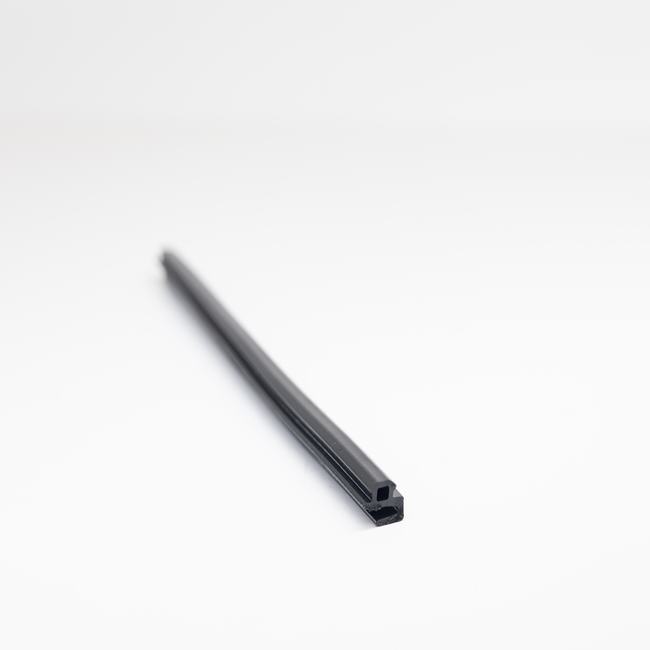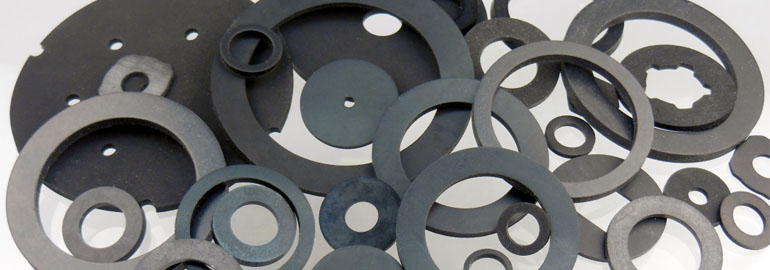PVC (Polyvinyl Chloride) pipe seals, also known as PVC gaskets or PVC pipe gaskets, are specialized sealing components designed for use in PVC piping systems. These seals are crucial for creating leak-proof and reliable connections between PVC pipes and other PVC components like fittings, valves, and connectors. PVC pipe seals are commonly used in a variety of industries and applications, including plumbing, irrigation, water treatment, wastewater management, and more. Here is a detailed overview of PVC pipe seals, including their composition, functions, installation methods, advantages, and applications:
Composition:
PVC pipe seals are typically made from elastomeric materials that provide flexibility, resilience, and chemical resistance. The key components of these seals may include:
- Elastomeric Materials: The primary sealing element of PVC pipe seals is usually made from synthetic rubber materials such as EPDM (Ethylene Propylene Diene Monomer), Nitrile rubber (NBR), or Viton. These materials are chosen for their ability to create a reliable and durable seal.
- Reinforcement Layers: Some PVC pipe seals may include reinforcement layers made of fabric or other materials to enhance strength and durability.
Functions:
PVC pipe seals serve several critical functions within a piping system:
- Sealing: The primary function of these seals is to create a tight and leak-proof joint between two PVC pipes or between a PVC pipe and a PVC fitting, valve, or connector.
- Chemical Resistance: PVC pipe seals are designed to resist the chemicals and fluids commonly found in PVC piping systems, preventing corrosion and degradation of the seal.
- Flexibility: The elastomeric nature of these seals allows them to accommodate pipe movements, vibrations, and temperature changes, maintaining a secure seal over time.
Installation Methods:
The installation of PVC pipe seals typically involves the following steps:
- Clean and Prepare Surfaces: Ensure that the pipe ends and the sealing surfaces on fittings or connectors are clean, dry, and free from dirt, debris, and grease.
- Apply Lubricant: Lubricate the seal and the sealing surfaces with a compatible lubricant to reduce friction and facilitate proper compression.
- Position the Seal: Place the PVC pipe seal evenly over the pipe or onto the fitting’s socket, ensuring it is centered and properly aligned.
- Join Pipes or Components: Connect the PVC pipes or components, ensuring that the seal is positioned between them.
- Secure and Tighten: Secure the connection using the appropriate method for your specific system, such as solvent cement for PVC pipes. Ensure that the seal is compressed evenly and securely.
- Inspect and Test: Conduct a visual inspection to verify that the seal is correctly installed. Pressure tests or leak tests may be performed to confirm the seal’s effectiveness.
Advantages:
PVC pipe seals offer several advantages in PVC piping systems:
- Leak Prevention: They provide a reliable and long-lasting seal, minimizing the risk of leaks and fluid loss.
- Chemical Resistance: PVC pipe seals are compatible with the chemicals commonly found in PVC systems, ensuring durability and reliability.
- Flexibility: Their elastomeric properties allow them to adapt to movements and vibrations within the piping system.
- Durability: PVC pipe seals are designed to withstand environmental conditions, UV exposure, and temperature variations.
- Ease of Installation: Installing PVC pipe seals is relatively straightforward and can be done using basic tools and equipment.
Applications:
PVC pipe seals are used in a wide range of applications and industries, including:
- Plumbing: For residential and commercial plumbing systems, including water supply and drainage.
- Irrigation: In agricultural and landscape irrigation systems for water distribution and control.
- Water Treatment: In water treatment plants and facilities for the treatment and distribution of drinking water.
- Wastewater Management: In sewage and wastewater collection and treatment systems.
- Chemical Processing: In chemical plants and industrial facilities for the transport of various chemicals and fluids.
- Swimming Pools: In the construction and maintenance of swimming pool plumbing systems.
In summary, PVC pipe seals are critical components in PVC piping systems, ensuring leak-proof and reliable connections. Their flexibility, chemical resistance, and ease of installation make them valuable for a wide range of applications across various industries. Proper installation and regular maintenance are essential to maximize the effectiveness of PVC pipe seals in any PVC piping system.






